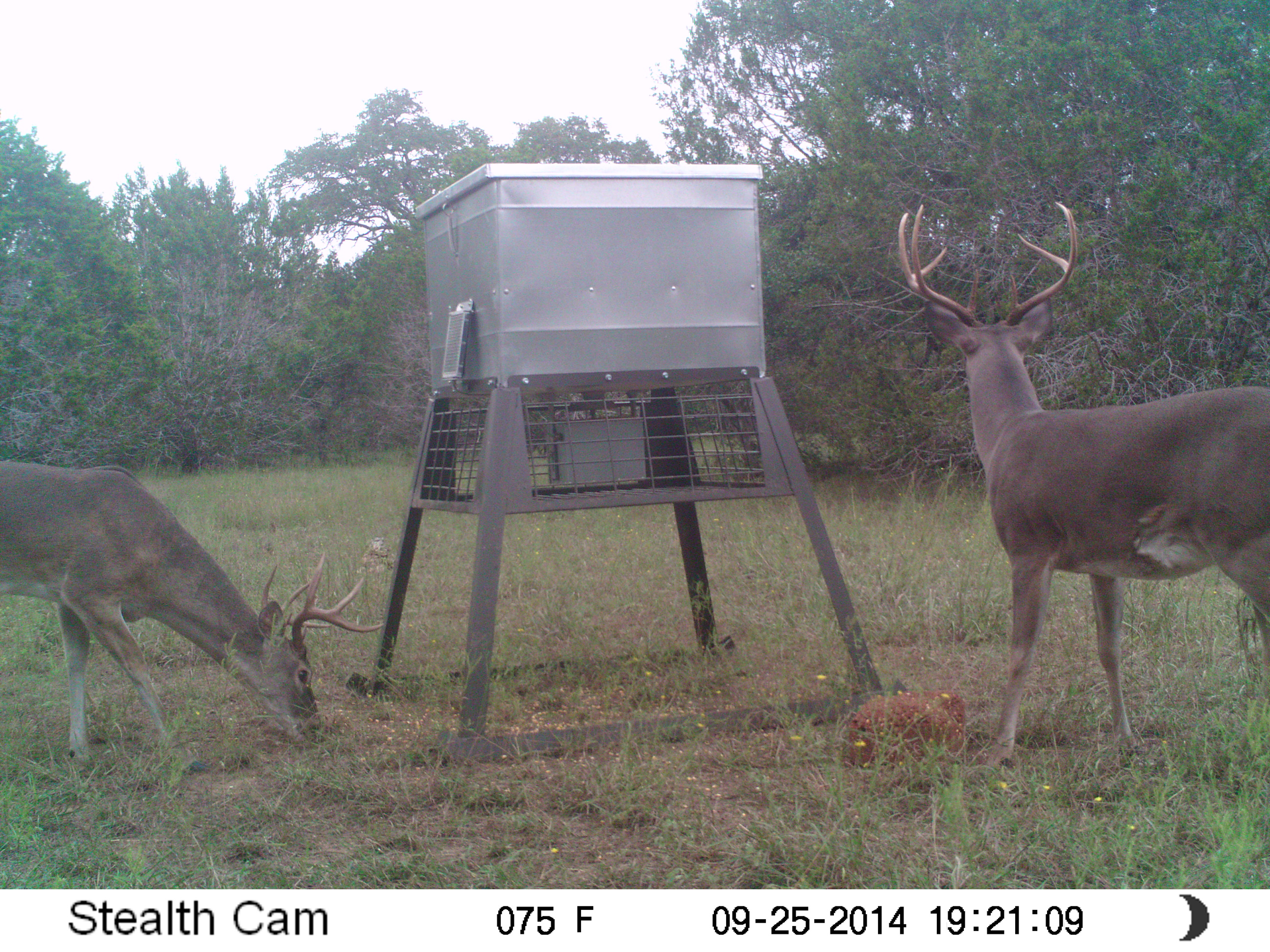If it’s melting hot outside, that means it’s deer season. But don’t worry about shimmying into your camo coveralls just yet, this deer season is all about surveys. Summer is the perfect time to conduct white-tailed deer surveys; the bucks are easily identifiable now while the fawns still sport their spots. August and September are also less likely to be influenced by seasonal environmental factors, food distribution, acorn-drop, or other biological events affecting deer. With a late summer survey, you’ll know the size of your deer population ― and what your management goals should be ― before November rolls around. For properties greater than 500 acres, spotlight surveys are often the best tool while remote cameras are often used for smaller tracts.
Spotlight Surveys
Spotlight surveys, conducted roughly one hour after sunset, involve the use of a vehicle with powerful lights to count deer along a predetermined path. To determine the path across your property to use for conducting the survey, Texas Parks and Wildlife offers the following guidelines:
“Select all-weather roads that go through a variety of habitat types. Avoid roads that frequently wash out or become impassable following heavy rain. The transect should sample different habitat types in proportion to number of acres they represent on the property. Avoid roads by feeders or food plots where deer may be concentrated.”
Area covered during the survey is used along with the total number of deer seen to estimate deer density. For more in-depth details on how to conduct a spotlight survey including how to get visibility estimates, see Conducting White-Tailed Deer Spotlight Surveys in the Cross-Timbers and Prairies Region on North & Central Texas by Texas Parks & Wildlife.
Remote Camera Deer Survey
For smaller properties or with habitats that are too dense to conduct more traditional spotlight surveys, deer cameras are a powerful tool to survey deer populations. In contrast to spotlight surveys, you want areas where feeders and food plots are located. Install your cameras near these high deer use areas on trees or posts ideally facing a solid-colored backdrop such as heavy brush to eliminate background movement and unidentifiable deer. Check for any significant obstructions up to about 50 feet in front of the camera to make sure you get a clear shot.
Research conducted in Texas indicates that relatively precise survey results can be obtained by conducting camera surveys during September and October as fawns are old enough to accompany does to feeding locations, hard mast (acorns, for example) has not begun dropping in large quantities, drawing deer away from feeding stations, and bucks have completed antler growth, allowing you to identify individual animals.
Cameras are run for a set period (10-14 days) and each photo is analyzed. The number of bucks is identified and estimates of does and fawns are determined from buck:doe and buck:fawn ratios from all photos taken within the survey period. For more in-depth details on how to conduct a deer camera survey, see Surveying White-Tailed Deer Populations Using Infrared-Triggered Cameras.
Knowing the basics about your deer herd such as density, sex ratio, and fawn crop, is essential for management purposes and August, September, and October are prime time to learn those basics with surveys.









